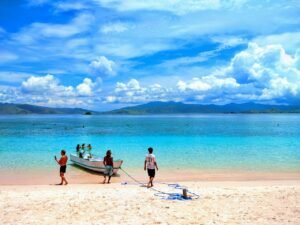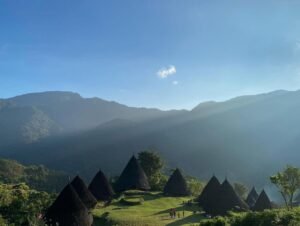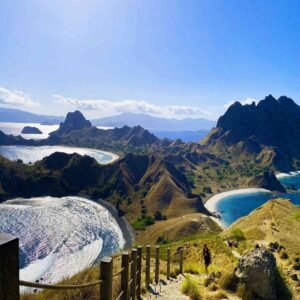
Komodo Conservation. The Komodo dragon, often referred to as the last living dragon on our planet, is truly one of the most fascinating creatures out there. Native to Indonesia, this ancient reptile has earned its place as a global symbol and a must-see on any Komodo adventure. Its primary home is in Komodo National Park, which includes the islands of Komodo, Rinca, Padar, and others nearby. In 1991, UNESCO designated the park as a World Heritage Site, recognizing its incredible biodiversity and the importance of conserving the Komodo dragons.
Conservation Efforts by Komodo National Park
1. Habitat Protection
Komodo National Park spans about 1,733 km², of which more than 70% is marine territory. The park protects not only Komodo dragons but also mangroves, coral reefs, savannas, and hundreds of plant and animal species. Authorities restrict construction, protect forests, and monitor marine ecosystems to maintain a balanced environment.
2. Population Monitoring
Every year, rangers and researchers conduct population surveys. Current estimates suggest there are about 3,000 Komodo dragons left in the wild. This monitoring helps track their distribution, breeding success, and overall health, allowing better conservation strategies.
3. Sustainable Tourism Regulations
Tourism is vital to the local economy but can threaten fragile ecosystems if unmanaged. The park enforces strict rules, including:
Limiting daily visitors on certain islands.
Guided trekking routes with mandatory rangers.
Strict prohibition on feeding Komodo dragons.
No development in core conservation zones.
4. Education & Research
The park collaborates with universities, NGOs, and international institutions to conduct research on Komodo behavior, genetics, and habitat resilience. Local community education programs also raise awareness on why protecting Komodos is essential for both biodiversity and tourism.
Challenges in Komodo Conservation
Climate change: Rising temperatures may disrupt Komodo reproductive cycles.
Tourism pressure: Overcrowding and irresponsible tours threaten natural balance.
Human-wildlife conflict: Dragons sometimes wander into villages searching for food.
Illegal hunting: Poaching of prey animals like deer and wild boar reduces Komodo’s food sources.
How Travelers Can Contribute
1. Follow Rules & Ethics
Keep a safe distance from Komodos.
Never feed or provoke them.
Stay on designated trekking paths with rangers.
Leave no trash behind.
2. Choose Eco-Friendly Operators
Support cruise or tour companies that apply eco-tourism practices: reducing plastic waste, using sustainable resources, and educating guests about conservation.
3. Support Local Communities
Buy local crafts, food, and services to empower communities. Stronger local economies reduce pressure on natural resources.
4. Donate or Volunteer
Several organizations run conservation programs that travelers can support financially or by volunteering. Donations fund research, habitat protection, and community education.
FAQ
1. How many Komodo dragons are left in the wild?
About 3,000 individuals remain across Komodo, Rinca, Gili Motang, and nearby islands.
2. Can travelers safely get close to Komodo dragons?
No, visitors must maintain a safe distance and always be accompanied by park rangers.
3. How can tourists help conservation efforts?
By following park rules, choosing eco-friendly operators, supporting local communities, and donating to conservation programs.
4. Do entrance fees support conservation?
Yes, most park entry fees contribute directly to conservation and park management.
5. Is it safe to bring children on a Komodo trip?
Yes, as long as families strictly follow ranger instructions and keep a safe distance from wildlife.
Conclusion
Taking care of the Komodo dragon isn’t just up to the national park; it’s a shared duty for every traveler who steps foot there. By following the rules, opting for responsible tour operators, supporting local communities, and getting involved in conservation efforts, you can make sure your trip to Komodo has a meaningful and positive impact.
Caring for Komodos means safeguarding one of the planet’s most incredible natural wonders. So, as you plan your visit to Komodo National Park, think of it as more than just an adventure make it a commitment to help preserve this ancient dragon for future generations.
Plan your Komodo Trip with care. Choose tours that prioritize conservation, respect local communities, and let your journey become part of the mission to protect these majestic dragons.






